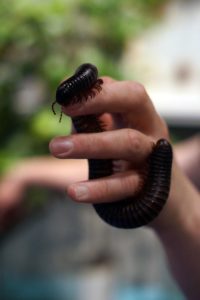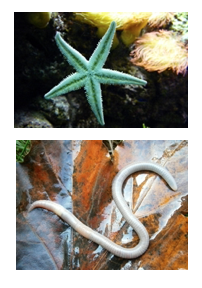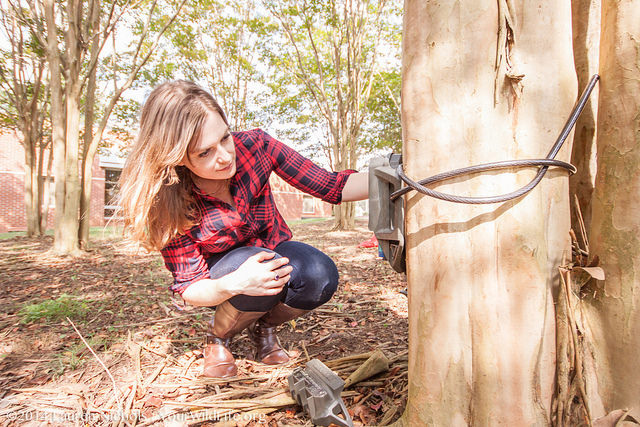Studying animals and interested in diving a bit deeper? Have a listen to one of the Walking Classroom’s Science Career Series podcasts, and meet Dr. Dan Dombrowski. Dr. Dombrowski specializes in veterinary medicine, a branch of medical science concerned with the diagnosis, treatment, and prevention of diseases in animals.
As the Chief Veterinarian and Coordinator of Living Collections at the North Carolina Museum of Natural Sciences, Dr. Dombrowski shares many of his experiences with a diverse set of animals throughout his time at the museum. The podcast with Dr. Dombrowski is easily accessible via The Walking Classroom’s mobile app, our website or on WalkKits in three of The Walking Classroom’s program offerings (4-#95, 5-#101, STEM-#54).
A Bit of Background
With a bachelor’s and master’s degree in biology, and a doctorate in veterinary medicine, Dr. Dombrowski has a lifelong love of animals. In the podcast, Dr. Dombrowski describes how, when he was a child, teachers and peers would often come to him with questions about animal behavior and injuries. Growing up, Dr. Dombrowski greatly enjoyed these conversations because they allowed him to combine his love of people with his passion for animals.
In his role at the Museum of Natural Sciences, Dr. Dombrowski has the opportunity to interact with museum guests while coordinating the medical management of the museum’s animal collection. His favorite animal to work with in the collection is fish, particularly as he works to understand the interaction between their gills and medical treatments.
Especially when treating less common species, Dr. Dombrowski emphasizes the importance of conducting observational and visual exams on all animals in the lab. He advises future veterinarians to discover their passions and become actively involved in them.
The Animal Kingdom
Veterinarians play an integral role in maintaining the health of the world’s creatures. They work in a variety of locations: zoos, farms, colleges, labs, and national parks, among many other places. As the animal kingdom is broad and expansive, they are tasked with a difficult job — adapting their treatments to a broad range of different organisms.
Did you know that there are over 8.7 million animal species worldwide? Take a look at these links about animal classification and history of the animal kingdom to customize your lesson about the animal kingdom.
Vertebrate or Invertebrate?
Each day, Dr. Dombrowski works with a variety of different animals at the museum — both invertebrates and vertebrates. How can we tell the difference? Vertebrates are animals that have a backbone inside their bodies, while invertebrates don’t have backbones.
 Examples of vertebrates include humans, dogs, and cats, while invertebrates include bugs, crustaceans, and sea stars. One of Dr. Dombrowski’s favorite invertebrates is the millipede, as he once repaired an injured millipede’s shell. And no, millipedes don’t have a million legs or even a thousand! In fact, common species of this particular invertebrate have between 40 and 400 legs.
Examples of vertebrates include humans, dogs, and cats, while invertebrates include bugs, crustaceans, and sea stars. One of Dr. Dombrowski’s favorite invertebrates is the millipede, as he once repaired an injured millipede’s shell. And no, millipedes don’t have a million legs or even a thousand! In fact, common species of this particular invertebrate have between 40 and 400 legs.
Interested in finding out more about vertebrates and invertebrates? Learn more about the difference between them in a short video or check out a longer video on the topic.
See the Symmetry?
Invertebrates often have body symmetry, meaning that their body parts align on opposite sides of a central point or axis. These body parts will be similar in size, shape, and relative positions. There are even multiple types of body symmetry — radial symmetry and bilateral symmetry are just two of them.
 While radial symmetry refers to symmetry around a central axis, like shown in a starfish, organisms with bilateral symmetry can be divisible into symmetrical halves on either side of a plane. Common worms and octopuses, for instance, have bilateral symmetry. Looking to further expand your students’ knowledge of animal symmetry? This video and lesson plan will help you learn more!
While radial symmetry refers to symmetry around a central axis, like shown in a starfish, organisms with bilateral symmetry can be divisible into symmetrical halves on either side of a plane. Common worms and octopuses, for instance, have bilateral symmetry. Looking to further expand your students’ knowledge of animal symmetry? This video and lesson plan will help you learn more!
Want to Dive Deeper?
As you can see, there are lots of interesting topics to address in the animal kingdom. To continue exploring with your students, bundle podcasts into a mini-series to learn more about organisms and those who work with them.
- Food Chains (Complete-#130, 4-#42, STEM-#33)
- Animal Classification (Complete-#131, 4-#41, STEM-#32)
- Marine Life (Complete-#142, 5-#76, STEM-#34)
- Dr. Stephanie Schuttler (4-#101, 5-#107, STEM-#57)
To bring it all together, consider using a final activity like the MedMyst Animal Alert game to test the skills of your budding veterinarians! Since veterinary medicine and the animal kingdom are such broad topics, the options for activities are practically limitless. You may also want to try out some of The Walking Classroom’s additional resources and activities to enhance student learning!






Leave a Reply